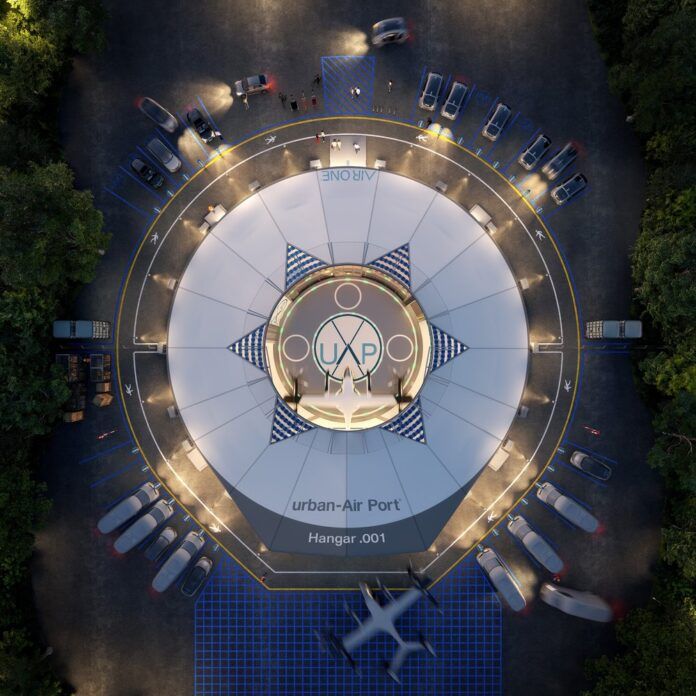Urban-Air Port opened its first hub for electric vertical take-off and landing (eVTOL) aircraft in Coventry, U.K., on Monday. According to the company, the 1,700-square-meter (about 18,300-square-foot) prefabricated Air-One “vertiport,” which was designed for “rapid” assembly and disassembly, will operate in Coventry for at least a month. While open, it will demonstrate operations such as aircraft command and control, eVTOL charging and cargo loading for unmanned drones along with hosting demonstrator flights with operators including the West Midlands Police, Skyfarer and Malloy Aeronautics.
“From design, through to fabrication and now into operation, Urban-Air Port has delivered Air-One in just 15 months, setting the standard for deployment globally and opening up a world of possibilities for rapid response air mobility,” said Ricky Sandhu, Urban-Air Port founder and executive chairman. “Air-One is just the first model in our infrastructure fleet and our order-book is not only open but already growing.”
Once its program in Coventry is complete, Urban-Air Port says Air-One will be moved to other locations in the U.K. and internationally for further demonstrations. The company noted that its vertiports can be deployed at short notice for operations like transporting emergency supplies in disaster situations and can be run entirely off-grid using on-site hydrogen fuel cells. Urban-Air Port says it plans to use Air-One as a blueprint for more than 200 additional sites, which it intends to open over the next five years in countries including the U.S., Australia, South Korea, France, Germany, Scandinavia and South East Asia.




































After takeoff, where is next port to land at? If you can land most anywhere – why do you need a port?
Very sexy, but we used “PSP” (perforated steel planking) in Vietnam for runways and I think it worked well. It is already in the marketplace and would not take 15 months to develop.
So in an emergency situation, how do you set this thing up? How many semi trucks do you need to transport it? And the hydrogen… Where does the hydrogen come from? Does that get trucked in too in a disaster situation? Maybe I misunderstand what off-grid means. I would think that off-grid means that you make your own electricity or energy. Hydrogen fuel cells need hydrogen, and you can’t just get it from thin air.
How about a diesel generator and some flood lights in a parking lot. You can carry all that in a trailer pulled by a light truck.
Indeed, thanks.
Eco-promotors are not well informed/do not think well.
Your kit could be slung in by helicopter.
For emergency situations I’d also desire markings, though good flood lighting might suffice. Motor vehicle headlights can add lighting, elevated floodlights have to be avoided by the air vehicle.
The photo used herein seems to have an elevated surface or roof over logistics space.
Scary looking were photos of Canadian SAR helicopters, big EH101s, landing close to downed trees to extricate people trapped by landslides blocking a highway on the edge of the Fraser Valley in southwest BC. People needing prompt medical care would have been evacuated by smaller helicopters, such as the S76 ambulance helicopters which probably have a modest spotlight. (The big SAR helos have searchlights, but did that operation in daylight.)